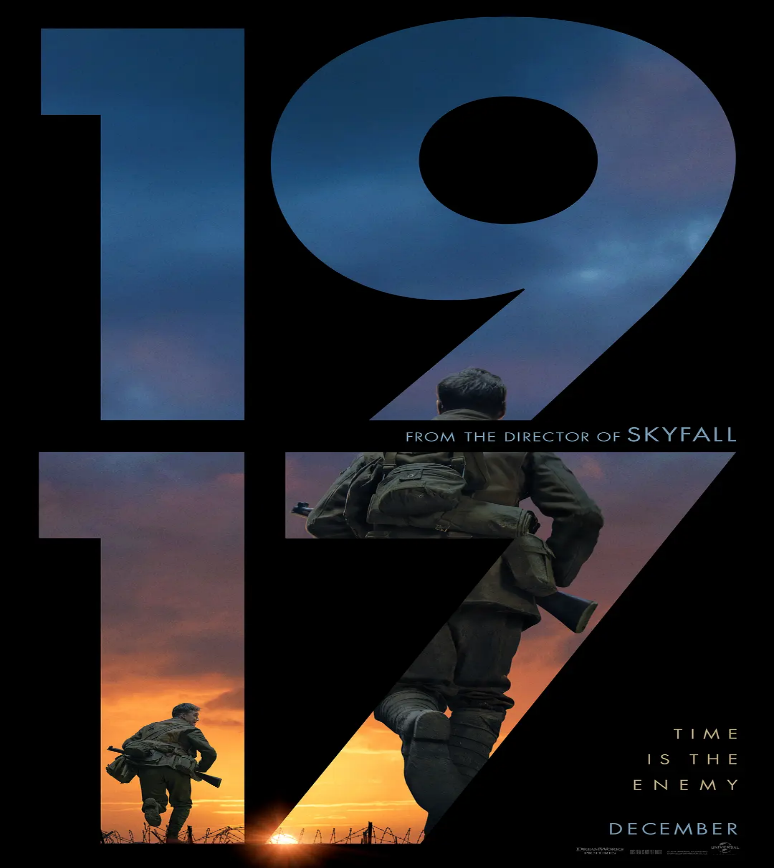I watched the IMAX version of “1917” in January and marveled at the technical miracle of the immersive one-shot, but also regretted that as one of the few war movies that could dabble in the rarely asked-for subject of World War I, this film gave me the impression that it was more of a gimmick to try to manipulate technology. Although the film intentionally tries to create a kind of the most realistic reaction to the cruelty of war, but compared to many films of similar themes, especially such as “Glory Road”, “Merry Christmas” and these hall of fame masterpieces, this film in the character portrayal and the depth of the core of thought still seems shallow. Moreover, because the story is loosely based on the director’s grandfather’s war experience in his childhood, in order to extend a simple story of mail delivery into the ups and downs of life and death, the film’s middle part of many of the pacing of the bridge (such as the plane crashing into the barn) strong sense of drama will inadvertently deprive the immersive atmosphere created before, but also lost part of the film to try to The film wants to shape the sense of gravity, can be said to be a great pity. But, having said that, the shortcomings of the plot, the film itself on the World War I trenches and no-man’s-land gruesome visual effects to create is definitely the best in its genre. The director also made full use of the two-hour journey, the key words of the World War I battlefield with a scene of great visual impact presented to the audience, I will try to break down the scenes of the film one by one, to introduce you to the key words behind the tragic history of World War I.

Background:The film takes place on April 6, 1917, the day the Germans conducted a tactical retreat in an attempt to lure the enemy deeper and strangle the British troops that followed them, and the main character’s task as a messenger is to convey the order to withdraw the attack to the 2nd Devonshire Battalion at the other end of the line in case the telephone line is cut, otherwise 1600 men will die under the German artillery.
Historically, in 1917, the war on the Western Front in Europe was still stalemated, while the Tsarist Empire was falling apart on the Eastern Front under the fierce Bolshevik Revolution. Therefore, as the pressure on the Eastern Front eased, and recognizing Germany’s inability to endure another attrition as severe as the Battle of the Somme in 1916, Kaiser Wilhelm II decided to pull back the troops on the French front to the stronger German-built At the same time, the strategy of unrestricted submarine warfare was restarted in an attempt to kill the British by blocking supplies at sea, thus achieving victory. This strategic withdrawal, codenamed “Aiberich,” began in February and lasted until April, when the German army withdrew 10-14 divisions over a period of two months by night from the post-Somme bulge between Arras and St. Quentin to the Hindenburg line. occupation zone between Arras and St Quentin after the Battle of the Somme to the Hindenburg Line, pushing the German line back 40 kilometers. During the evacuation, to ensure that the advancing British and French forces would not take advantage, the Germans adopted a scorched earth policy, spending a week cutting down all fruit trees in the occupied area, contaminating wells, razing villages to the ground, blocking roads with trees, and blowing up all railroads and bridges. Some 125,000 young and able-bodied civilians living in the occupied area were transported to work in other parts of France and Belgium, while children, women and elderly people with limited mobility were left behind by the Germans to survive on the battlefield with minimal food rations. In the abandoned trenches at the front line, the Germans placed a large number of trip mines and booby traps, and on the way back, the Germans placed scattered snipers and defensive troops, posing a great threat to the advancing British and French soldiers. The scenes in the film are very reductive of this period of history, with trip mines in German pits, artillery pieces blown up during the retreat, cut down orchards, roads blocked by trees, blown up bridges, German snipers in buildings, and French women and babies hiding in the basement of the village (the name of the village was Écoust-Saint-Mein, a village located in the middle of the occupied zone). The French women and babies hiding in the basement of the village (Écoust-Saint-Mein, a village in the middle of the occupied zone) are the most realistic portrayal of this history. Due to the scale and secrecy of the German retreat, the commanders of the British and French forces were very confused by the “empty city”, which seriously disrupted the original attack plan of the two armies in the spring, and the traps and obstacles set by the Germans on the way forward also seriously hindered the confidence of the British and French troops. The film is also inspired by this historical event and creates a dangerous journey with frightening steps and hidden dangers against the backdrop of the German retreat.
There is also an interesting historical fact is that the movie takes place on the date of the United States World War I. Here we will not expand on the reasons for the United States to enter the war, but to determine the point is that the Americans are ostensibly to defend freedom and democracy, but in fact only afraid that Britain and France lost can not afford to pay back the bonds bought during the war to the United States.
Messenger – race against time:
In the film, the protagonist Scofield and Corporal Black is the British army to and from the troops to deliver letters between the messenger (Runner), World War I can be said to be the era of the explosion of the use of modern technology, tanks, aircraft, new firearms, medical and other technologies have been greatly enhanced in the war, however, the communication technology during this period is still not much progress, the most sophisticated telephone line technology in the complex The most mature telephone line technology often failed under enemy fire and sabotage in the complex battlefield environment. The newly developed radio not only had poor confidentiality, but also had limited use. Therefore, most of the time it was still the “communication by roar, transmission by walk” method to convey information. This also highlights the advantages of the messenger: more reliable than the static connection of telephone lines. People as a carrier of information, not only can remember more complex information, to avoid the destruction of the documents carried, but also at critical moments to destroy information to prevent interception by the enemy, and most importantly, the flexibility of the messenger to ensure that the message to the most dangerous, the most difficult to reach corners of the battlefield. Because of this, messengers who had to travel regularly between the front lines and no-man’s land were arguably the most dangerous occupation in World War I, in addition to the assault commandos.
Messengers were usually chosen based on their physical fitness, endurance and map reading ability. Most messengers were small in stature. The army requires a high level of mental and psychological ability to find the destination in all weather conditions and to have the legs to survive in a hail of bullets. And because of the great danger carried by the occupation itself, messengers are usually played by soldiers of low rank, the film’s protagonist Schofield is a corporal who survived the Battle of the Somme, can survive the battle in the few soldiers, but also to prove that he was enough to take up such an important task of messenger. Interestingly, the leader of Nazi Germany Adolf Hitler also served as a German messenger during World War I. He was also wounded in the course of the mission (wild history says he was blown up an egg, but the history of his left leg was wounded by shrapnel in 1916, and was also burned by the British mustard gas in 1918:
The film is not so much a thought-provoking anti-war masterpiece as it is a showpiece for the best cinematography. The dramatic sequences and the bad interpretation of the “Anglo-French friendship” make this film lose a lot of points in the plot. But there is no denying that the film’s portrayal of the World War I battlefield is very restored, and I hope that after the end of the epidemic, this film can be released as scheduled, to popularize the forgotten history of a century ago for the domestic audience. I will write more about the background of the film for the time being, if you are interested, you can also talk about the British Foreign Legion and other historical background of World War I in the film later. The tragedy of World War I, as Colonel Mackenzie, played by Cumberbatch, says at the end of the film: “Retreat now, and next week will convey a different order to attack at dawn. There is only one way to end this war, and that is to fight to the last man.” In the midst of the meaningless back and forth tug of war, thousands of young lives were consumed by the ambitions of the nobility, and one desperate charge was a repetition of human tragedy after another. May the world be at peace, and may we all survive the epidemic in peace.(I hurt my eyes and throat and almost lost my eyesight)
